The terms "scale" and "mode" are often used interchangeably, but strictly speaking, there is a significant difference between them in music theory. Although they may share the same set of notes, a scale and a mode or modal scale are not the same thing. It's important to note that a scale and a mode can contain the same notes.
The terms "scale" and "mode" are often used interchangeably, but strictly speaking, there is a significant difference between them in music theory. Although they may share the same set of notes, a scale and a mode or modal scale are not the same thing. It's important to note that a scale and a mode can contain the same notes. This started out as a reply to a on-line posting and question. I realized a lot of players don't know the difference between a scale and a mode or scale mode. So, I thought I'd spin out a little Internet lesson and post it. So here is my take on the Scale and Mode thingy.
To provide a clearer understanding, let's consider the example of the G Major Scale ( G A B C D E F♯ G' ) as our context.
It's crucial to recognize that simply starting on a different scale degree does not define one mode from another. In order to fully understand and explain music, it's best to explore it within its specific context.
- A Dorian: A B C D E F# G A`
- B Phrygian: B C D E F# G A B`
- C Lydian: C D E F# G A B C`
- D Mixolydian: D E F# G A B C D`
- E Aeolian: F# G A B C D E`
- F# Locrian: F# G A B C D E F#`
- G Ionian: G A B C D E F# G`
When studying modes, a common source of confusion arises from using the same major scale as the foundation for learning. However, for our current purposes, utilizing the major scale will indeed aid in clarifying the distinction between a scale and a mode. In fact, it offers the advantage of exploring seven modes within the framework of a single major scale.
By starting the major scale on different scale degrees, we can derive unique modes, each with its own distinctive sound and character. This allows us to obtain seven distinct modes from a single major scale. This approach provides a practical and comprehensive way to grasp the concept of modes and understand how they differ from a scale.
Therefore, despite the potential confusion that may arise, using the major scale as a basis for studying modes serves as an effective tool for illustrating the differences between scales and modes while also offering the added benefit of exploring multiple modes within a single framework.
Using the G Major Scale (G A B C D E F# G') for comparison.
- Dorian — A B C D E F# G A` is frequently called a minor scale. As it is a minor scale type with a minor 3rd and minor 7th.
- Phrygian — B C D E F# G A B` is also a minor scale. I don't know of any other common name for Phrygian. I'm sure there are some.
- Lydian — C D E F# G A B C` , is a major scale.
- Mixolydian — D E F# G A B C D` is often referred to as the Dominant scale and is a major scale type.
- Aeolian — E F# G A B C D E` this is the same as the Natural Minor scale.
- Locrian — F# G A B C D E F#` a diminished scale type. No other common names that I'm aware of.
- Ionian — G A B C D E F# G` , this is the common Major Scale.
Indeed, the Dorian, Aeolian, and Mixolydian modes are commonly used in contemporary music. These modes have distinct characteristics that contribute to their unique sound and are often employed by musicians and composers.
For example, the song Moondance incorporates elements of both the Dorian mode and the Natural Minor or Aeolian mode. The Dorian mode, with its characteristic major sixth interval, provides a smooth and jazzy quality to certain sections of the song. On the other hand, the Natural Minor or Aeolian mode contributes a melancholic and introspective vibe to other parts of the composition. The combination of these two modes enhances the overall texture and mood of the piece.
Another well-known song, "Sweet Home Alabama," is predominantly based on the Mixolydian mode. The Mixolydian mode, characterized by its major scale with a flattened seventh degree, imparts a distinct southern rock and blues flavor to the song. This mode is commonly used in many popular rock and blues compositions to create a laid-back and groovy atmosphere.
By incorporating modes into their musical compositions, artists can harness the unique tonal qualities and expressive possibilities they offer, adding depth and variety to music.
The characteristic sound of each mode is derived from its unique scale step, which, when emphasized in a melody or improvised solo, defines the mode. This emphasis on a specific scale step creates what is referred to as a "scale mode" or simply a "mode." This distinction forms the primary difference between the traditional major scale, key, and tonality, and the traditional tonic and dominant harmony.
By focusing on a particular scale step within a mode, musicians can evoke the distinct sonic qualities associated with that mode. This emphasis shapes the melodic and harmonic elements, contributing to the mode's characteristic sound and feel. In contrast, traditional major scale, key, and tonality rely on different principles, emphasizing a fixed Tonic and Dominant harmony as their defining elements.
Understanding and utilizing these unique scale steps in modes allows musicians to explore a broader tonal palette and create music with diverse flavors and emotions, extending beyond the conventions of traditional major scales and keys.
The Characteristic Scale Steps for the modes are (based on the G Major Scale):
- Dorian: A B C D E F# G A' , characteristic scale step is F#, the sixth scale degree.
- Phrygian: B C D E F# G A B' , characteristic scale step is C, the second scale degree.
- Lydian: C D E F# G A B C' , characteristic scale step is F#, the fourth scale degree.
- Mixolydian: D E F# G A B C D' , characteristic scale step is C, the seventh scale degree.
- Aeolian: E F# G A B C D E' , characteristic scale step is G, the third scale degree.
- Locrian: F# G A B C D E F#' , characteristic scale step is C, the fifth scale degree.
- Ionian: G A B C D E F# G' , characteristic scale step is G, the first scale degree.
Even more to confuse you. Using triads, a three note chord, each mode has the same chords. Using our G Major Scale they are: G, Am, Bm, C, D, Em, and F#dim chords in its chord collection
.
Just as each mode has a characteristic scale step for the mode. Each mode has characteristic chords. The primary, secondary, and diminished chords of each mode help define the modal sound.
It's the characteristic scale step that identifies the primary and secondary chords for each mode. The primary chords of any one of the modes are the I chord of the mode and the major and minor triads that contain the characteristic scale step.
An example using A Dorian:
- A B C D E F♯ G A'
- 1 2 3 4 5 6 7 8 scale degrees
- I, II, III, IV, V, VI, VII chord functions
The Dorian mode is defined by its characteristic scale step, which is the sixth degree of the mode. In the case of A Dorian, this would be F♯. The primary chords associated with the Dorian mode include the I chord of the mode, as well as major and minor triads derived from the mode. In the key of A Dorian, these chords are Am, Bm, and D. The Bm chord consists of the notes B, D, and F♯, while the D chord is comprised of the notes D, F♯, and A. Both of these chords contain the characteristic scale step of the Dorian mode, namely the sixth degree, F♯.
It's important to note that the one ( I ) chord within the mode is not required to have the characteristic scale step. In the case of the Dorian mode the I chord does include the sixth degree of the mode.
- Am (A C E), the I chord
- Bm (B D F♯) the II chord
- D (D F♯ A) the IV chord
The C, Em and G are secondary chords of the mode and the F#dim is the lone diminished chord.
OK, one more to show that the G Ionian mode is different that the G Major scale.
Characteristic scale step is the one, G. So the primary chords are the I chord of the mode and the major and minor triads: G C and Em:
- G (G B D) the I chord
- C (C E G) the IV chord
- Em (E G B) the VI chord
In the traditional key of G major the I IV and V chords are the primary chords. The tonic, sub-dominant and dominant chords.
Alright, one more example. D Mixolydian D E F# G A B C D'. The characteristic scale step in Mixolydian is the seventh, C. The primary chords are the I , V , and VII . D, Am and C.
Here is a 12 bar, D Mixolydian blues
|| D | C | D | D |
| G | G | D | D |
| Am | C | D | Am ||
|| I | VII | I | I |
| IV | IV | I | I |
| V | VII | I | V ||
Each mode contains notes and chords common to a corresponding, related major scale. So it is easy to inadvertently slip into a mode's related major scale. When that happens, you have lost the mode and have actually modulated into a major key. This can occur melodically or harmonically or both. Basically avoid or handle with care the D to G as that is the V to I in our G Major example.
One of the keys to all this mode or modal stuff is that the harmonic function of a chord, its I , II , III , IV , V , VI , VII is different in each mode for each chord. Here is how the Am chord functions harmonically in each mode:
- Am in A Dorian is a I chord.
- Am in B Phrygian is a VII chord.
- Am in C Lydian is a VI chord.
- Am in D Mixolydian is a V chord.
- Am in E Aeolian is a IV chord.
- Am in F♯ Locrian is a III chord.
- Am in G Ionian is a II chord.
Their harmonic function is completely different from mode to mode. Just as a G in the Key of C is different than a G in the Key of G , or G in the Key of D in traditional Tonic/Dominant harmony.
With printed music only using key signatures for major and their relative minor keys. It's this harmonic knowledge that will allow you to determine if a song is in a major key or a mode. You might not need this to just play chords but to embellish the chords and improvise it's a definite plus.
This is a classic case for only naming things IN CONTEXT. In music there isn't a lot that can be named out of context.
Secret Mantra
I have a helpful and mystical technique that I rely on to determine the chords of any mode derived from a major scale. Here's the key to unlocking it:
For Triads in the major scale, the order of chord types are as follows: major, minor, minor, major, major, minor, diminished.
For Four-part 7th Chords in the major scale, the order of chord types is: major 7th, minor 7th, minor 7th, major 7th, 7th, minor 7th, half-diminished (or minor 7th flat 5).
This mnemonic tool allows me to easily recall the chords associated with major scales and their related modes. By starting at a different point in the sequence, I can derive the chords for any mode. With this approach, you don't need to memorize an overwhelming amount of information. This tool, combined with your knowledge of major scales, provides you with the means to determine the chords for any mode.
Related Lessons, Videos, Lesson Series, Songs, Books & Reference Charts, Resources & Assets, Workshops are below.
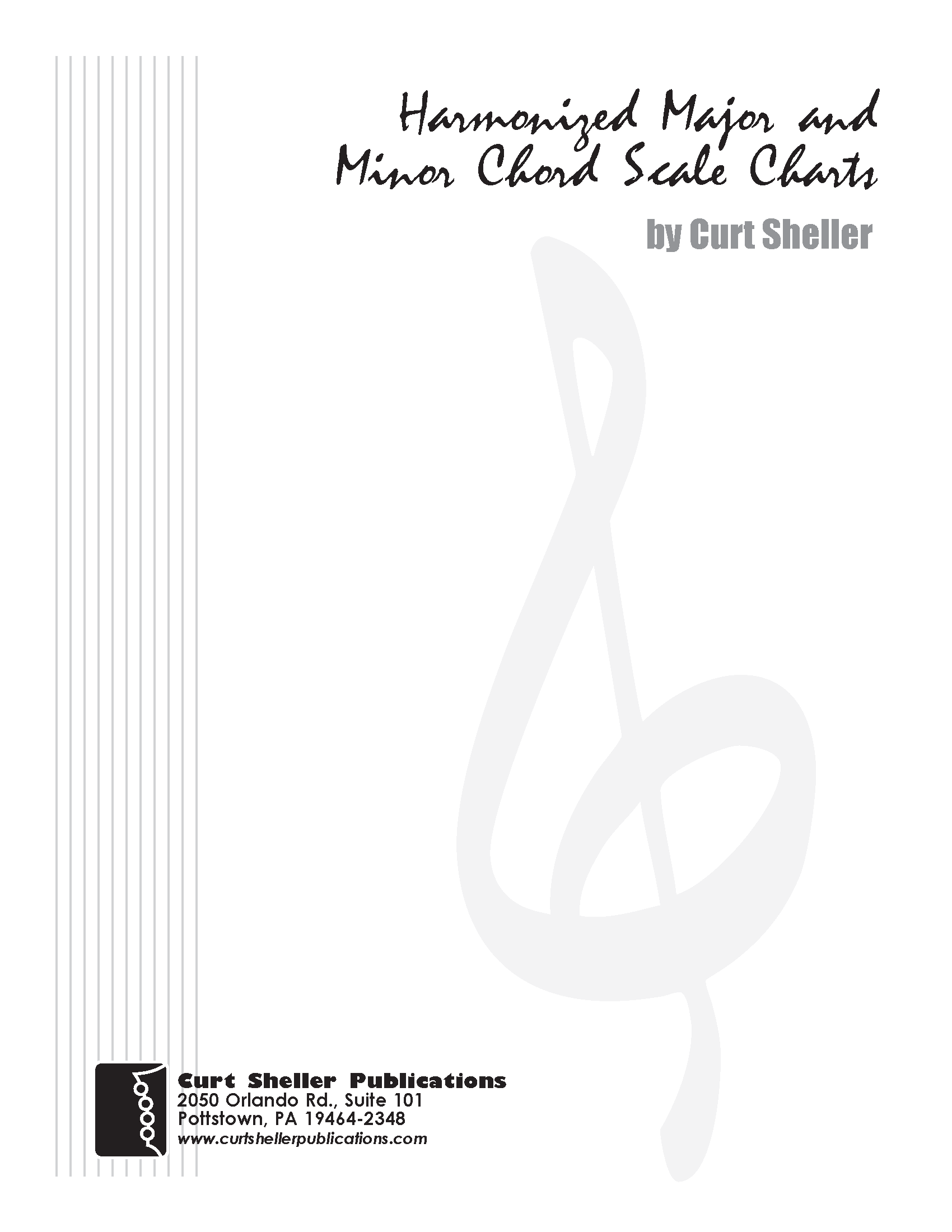
The "Major Scale" or Ionian scale is a diatonic scale, made up of seven distinct notes, plus an eighth which duplicates the first one octave higher. In solfege these notes correspond to the syllables Do, Re, Mi, Fa, Sol, La, Ti/Si, (Do), the Do in the parenthesis at the end being the octave of the root.
What is the Difference Between a Scale and a Mode?.
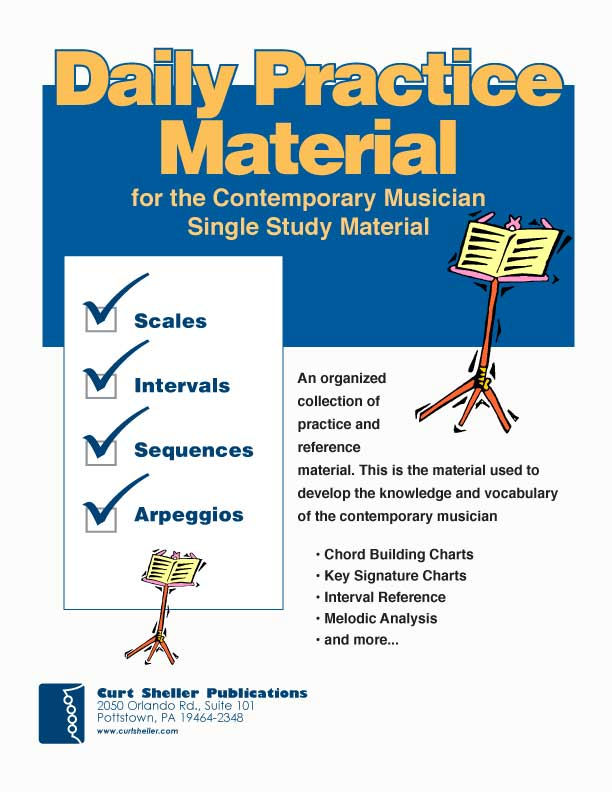
Daily Practice Material for the Contemporary Musician is an organized collection of daily practice and reference material for the contemporary ukulele player. This material can be used to develop the vocabulary and knowledge necessary for single note playing.

Harmonic Analysis is the understanding of the functional sequence of chords. It is the process used to analyze the harmonic structure of a progression, song or composition. This analysis is then used to make scale selections for improvisation and chord substitution.
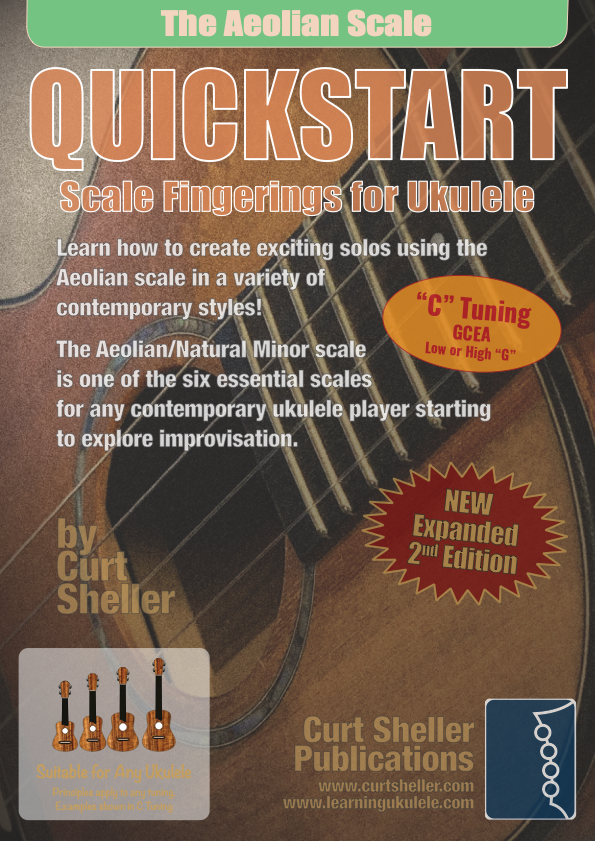
The Aeolian or Natural Minor is one of six essential scales for ALL ukulele players. One octave scale fingering solutions for strings four and three and any finger with the Aeolian scale chords are covered in all keys. Sample chord progressions for practice are included.

The Ionian scale is a major scale more commonly known by its traditional name - Major and one of six essential scales for ALL ukulele players. One octave scale fingering solutions for strings four and three and any finger with the Mixolydian scale chords are covered in all keys. Sample chord progressions for practice are included. Tunings: C with low or high G - (GCEA or gCEA). This book includes access to four studio recorded backing tracks for exploring the scale and improvisation in a variety of settings. Tracks are also great for practicing your chords against.

The Mixolydian or Dominant is one of six essential scales for ALL ukulele players. One octave scale fingering solutions for strings four and three and any finger with the Mixolydian scale chords are covered in all keys. Sample chord progressions for practice are included. Tunings: C with low or high G - (GCEA or gCEA). This book includes access to four studio recorded backing tracks for exploring the scale and improvisation in a variety of settings. Tracks are also great for practicing your chords against.

Finally, learn the names of the notes of the ukulele fingerboard in C tuning .

Learn the six fingering principles to navigating the ukulele fingerboard. Fingering is one of the most universal topics. Book: Six Secrets of the Ukulele Fingering

Harmonic Analysis is the understanding of the functional sequence of chords. It is the process used to analyze the harmonic structure of a progression, song or composition. Book: Harmonic Analysis for Scale Selection and Chord Substitution

Learn to read single note melodies in the first/open position is a lot easier than you might think. Book: Ukulele – Reading Music Series – Primer

An organized collection of daily practice and reference material for the contemporary ukulele player for developing the vocabulary and knowledge necessary for single note playing. Book: Daily Practice Material for the Contemporary Ukulele
Checkout the Books & Reference Charts for additional Handy, Dandy Reference Charts.

Ukulele Fingerboard Chart for C Tuning, Low or High G – G C E A

Ukulele Fingerboard Chart for G Tuning, Low or High A – D G B E

A handy reference chart of all 15 major and relative minor key signatures. US Letter 8.5 x 11 sized (ANSI-A), A4
Checkout the Books & Reference Charts for additional Handy, Dandy Reference Charts.



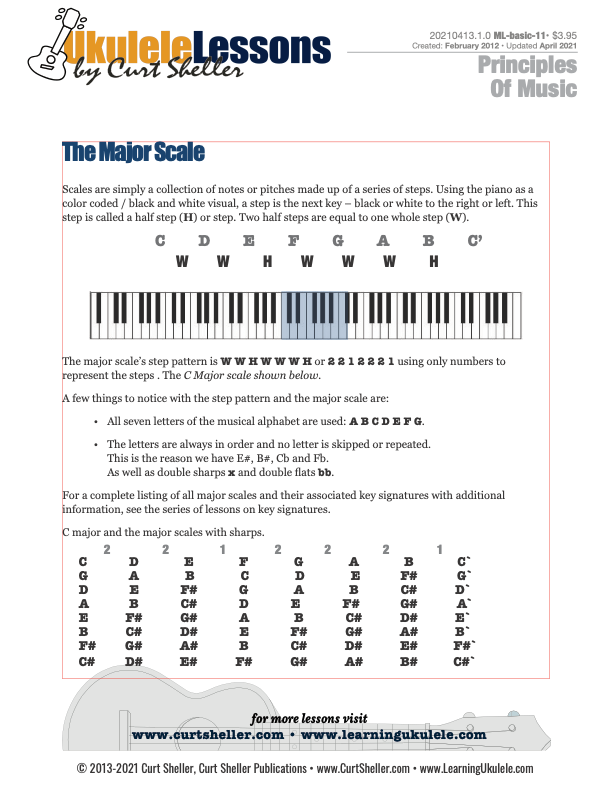



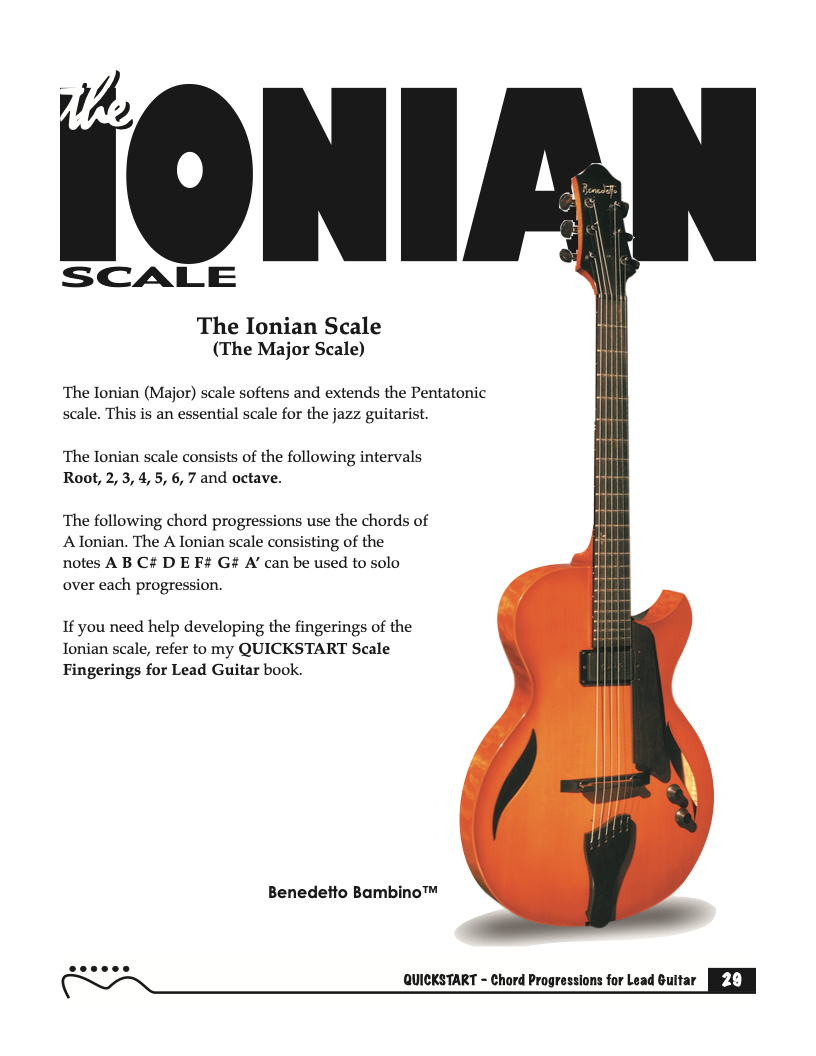
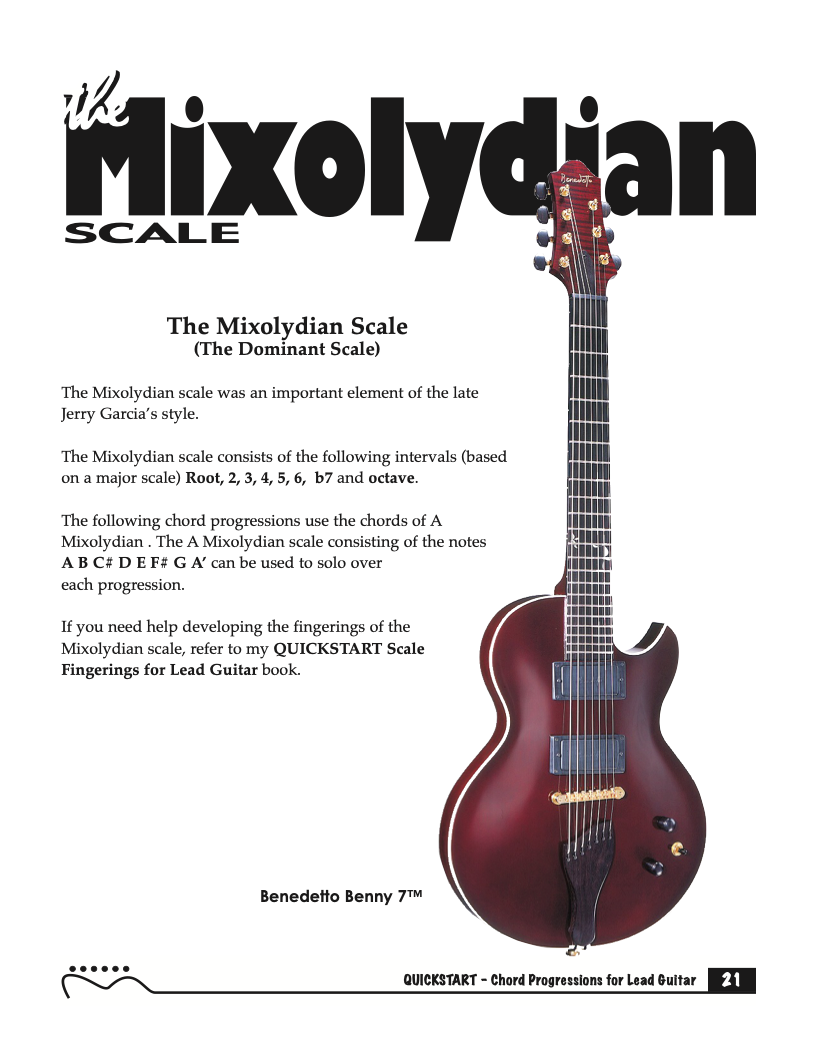
.jpg)